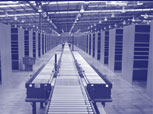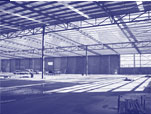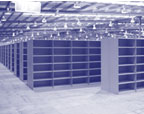
Case Study
CLIENT
One of D C Logistics’ major clients over recent years has been the Western Australian headquartered public company, Coventry Group Ltd (“CGL”).
CGL employs over 2,100 people operating at 150 sites across Australia and New Zealand. Group turnover in 2007 was $523mil. There are 3 business units – distribution of automotive parts; distribution of industrial products; and manufacture of automotive and industrial gaskets.
PROJECT OVERVIEW
CGL’s main site was in Morley in metropolitan Perth, Western Australia. The 4-hectare Morley site had housed the Automotive Division’s WA distribution centre (“DC”) and the group head office for 35 years.
CGL undertook a feasibility study which determined that the Morley property should be sold and the operations relocated to a new facility.
A new 3.9-hectare leased site was selected in Redcliffe, closer to the primary transport network. CGL worked closely with the developer’s representatives to develop the detailed design of the new buildings as a purpose built facility, comprising 14,500m2 of warehouse building and 4,000m2 of office building.
The internal layout of the warehouse incorporates these features:
- a raised storage area of 3,000m2 (rack supported)
- a state-of-the-art computer controlled conveyor system including mechanical sorter
- a variety of storage fixture types including – special fixtures for “uglies” ie over-sized items; pallet racking; long span shelving; steel binning; and parts trays
- 450 lineal metres of very-narrow-aisle (“VNA”) storage
- dangerous good areas
- forklift charging room
- cross-dock facility.
The internal layout of the office was designed primarily on open-plan principles and using space efficient 120° radial work-stations.
CGL moved into the new Redcliffe facility in late 2007.
D C LOGISTICS ROLE
D C Logistics was appointed as CGL’s lead consultant on the project.
As project managers, D C Logistics lead an internal CGL team through the following phases of the project….
- feasibility study
- new site selection
- building design input
- internal warehouse fitout and layout design
- internal office fitout and layout design
- selection and appointment of warehouse and office fitout contractors
- contract management of warehouse and office fitout contractors
- relationship management with the developer, builder and building consultants.
D C Logistics also provided support to CGL in these areas:
- development and review of warehouse operational processes to feed into software specifications and training programs
- close collaboration with software project manager
- implementation planning.
SOME POINTS OF INTEREST
- A key challenge in the design of CGL’s new DC facility was the inter-relationship between the very high product range (over 100,000 items) and the very short order lead times to process sales orders (less than 1 hour). This required an innovative order picking and storage solution to achieve the right balance between product accessibility and order picking productivity.
- Another design challenge was the great variety in sizes of the automotive parts to be warehoused, ranging from very small items (eg fuses) to very large (eg mufflers). This variety meant that the one-size-fits-all principle could not be applied to the design of the storage fixtures and extensive analysis of the product range and its characteristics was required to achieve optimum cubic efficiency.
- In the early stages of the project CGL did not have on file data about the weights and measures of their full product range. In order to develop the initial warehouse design concept and sizing we developed a matrix which plotted every item by velocity on one axis and by size on the other axis. This technique enabled the development of the facility design without needing to wait for the detailed capture of specific weights and measures for the whole product range.
- The new DC uses voice picking technology where order information is converted by the computer system into a verbal instruction to the pickers by way of a computer emulated voice sent by wireless. This technology has the dual benefits of being highly productive and also highly accurate – productivity is higher than paper based picking and accuracy is as high as RF scanning. An added benefit is improved safety as the picker has two hands available for the physical handling tasks.
 Back to top of page
Back to top of page





